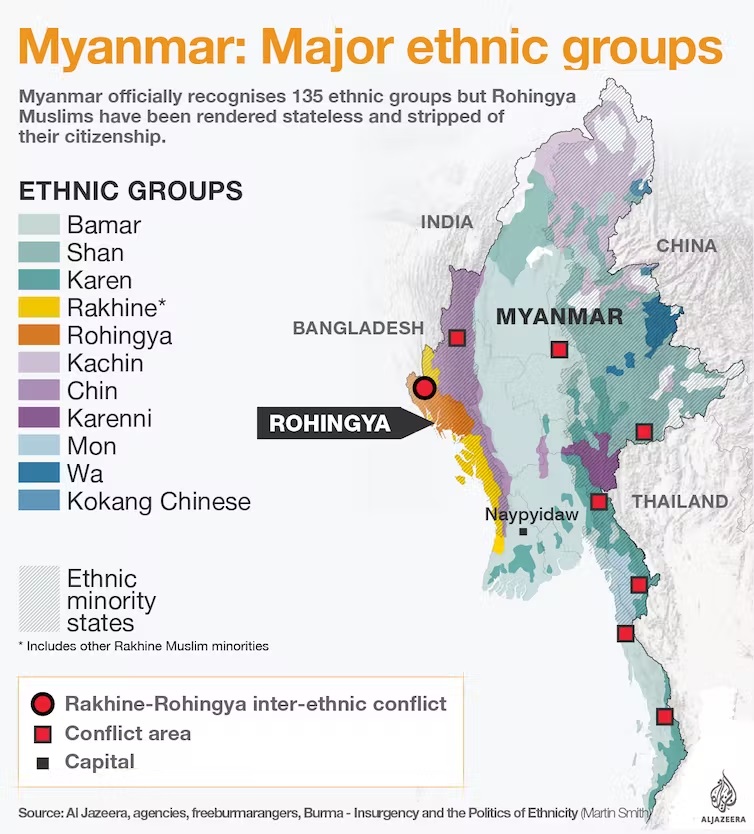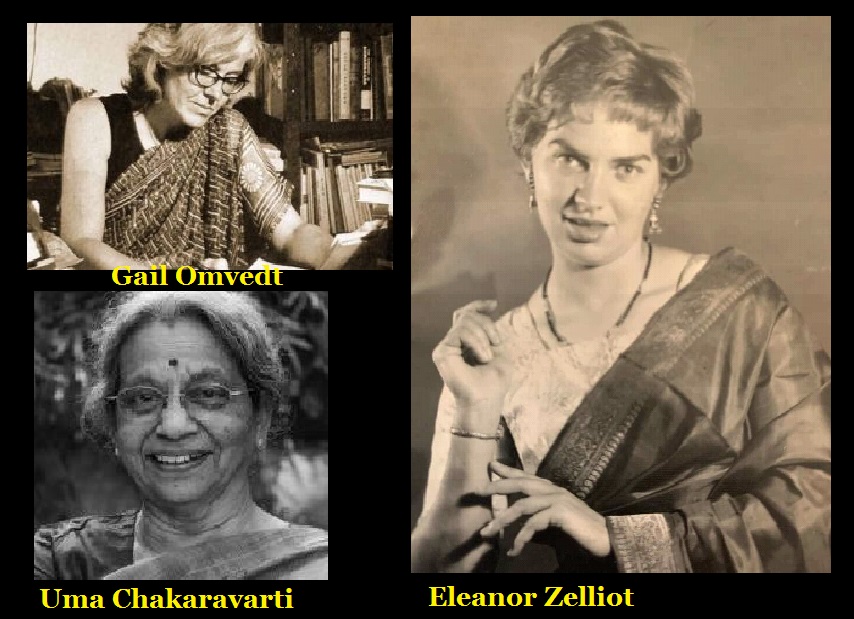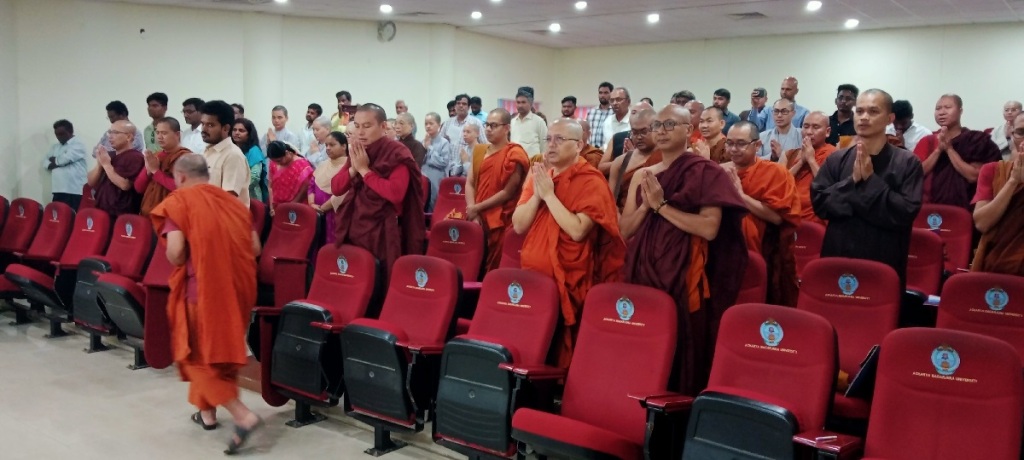Heritage Management – how it differs from Conservation, reconstruction, maintenance etc.,

Dr T. Satyamurthy delved into different issues connected with “Heritage management.”


elite audience


View of the audience…

More elite audience came….

January 2024 – first Monthly Meeting on Heritage Management: RSN, Memorial Library and Indology Research Institute was inaugurated on October 28th, 2023[1]. Dr Subramanian Swamy inaugurated and many other dignitaries were there at that time[2]. At that time, it was decided to hold every month, a special lecture to be organized and addressed by a historian, an archaeologist, a numismatist, and similar expert on Indology. Accordingly, on 28-01-2024 (Sunday) the first monthly lecture was delivered by Dr. T. Sathyamurthy on “Heritage Management”[3]. I was expecting him for the inaugural function, but he could not attend, because of his preoccupation. So it was a happy occasion that he delivered the fist lecture here gracing the juncture. He is an archaeologist with the Archeology Survey of India and Founder of the Reach Foundation, with 50 years of experience in excavation, reconstruction, etc. He explained with examples how to preserve, restore and transform ancient Indian buildings, temples and other structures without affecting the traditional factors and features.

The dilapidated condition of the Siva temple, Uttiramerur……

How modern technology was also used for restoration[4]: The short film also explained how a dilapidated Shiva temple in Uttramerur was gradually rebuilt with the stones and bricks available there itself. The walls, roof etc. and the relief sculptures were completely restored carefully with the available materials with careful restoration. For that, he also explained how the method of connecting granite stones, weight-bearing strength, and other details were technically tested in the IIT Chennai laboratory, and then the restoration, preservation and conservation works were successfully completed using that technology. Some important modern techniques were used to restore the heritage structure, thereby bridging modern techniques to save ancient marvels! After a year full of research and consultations, testing and recording the stitching of granite using Stainless steel rods and proving their strength while being used as a stitching material along with a binder material made of epoxy, stones which lie below and the foundation level have been successfully retained without being rooted away, thus saving crores of rupees and time in removing all the stones used to build the temple! I.I.T Civil Engineering department Prof. Mathews and his PG research student Ms. Anupadma, and the company which provided the drilling and filling materials M/s.HILTI deserve our thanks and appreciation for their co-operation and services.

How the stones were stitched: Cracks appearing at the bottom most part of the foundation, were ‘stitched’ using grooved Stainless rod thus the cracked granite stone is put back to a single repaired stone thus becoming integral using epoxy based grouting compound to bond the stainless steel rod with the granite core.
- Drilling holes diagonally so that the hole passes through both halves of the broken granite…
- 2) After which the holes are cleaned to remove all the powdered granite chips and slurry..
- Then comes the pumping in of the epoxy putty grouting material
- And the insertion of the grooved Stainless steel rod,
- filling the holes with the same ground granite powder..and
- The crack is stitched

According to Dr Mathews, the technique itself is very simple and not very expensive. But he says that when dealing with ancient monuments, it is important that care is taken over the materials used[5]. “High-grade stainless steel rods with a high percentage of chromium were used so that they didn’t corrode for at least another five hundred years,” he says[6]. Both Dr Sathyamurthy and Dr Mathews say that in India there are many temples and monuments in danger of total collapse or partial collapse and that these are causes for concern[7]. Dr Mathews says that further research in the laboratory in stone stitching and other reversible interventions is needed. This could allow the technique to be used to conserve other monuments in future[8]. With the basement safely secured, the team started conserving the super-structure, including the huge dome using a newly created lime plaster based on the old formula[9]. The conservation team now says that a weight of around 30,000 tonnes can safely rest on the basement and the plinth of granite rocks[10].

Inscriptions buried were revealed after removing debris.

From the Pallavas to 2013: The temple was built during Pallava King Nandi Varman’s period and reconstructed during Chozha period with stone up to Adhistanam. Latter patronized by Chozha Kings Parataka Chozha_I, Rajaraja-I, Rajendra Chozha-I and Vijayanagara Kings, especially Krishnadevaraya. The inscriptions mainly record about donations made to this temple in terms of Land, Gold, Goats, Cow, etc for the regular poojas and functions. In one of the inscriptions it was mentioned that if anybody obstructs the normal functioning of the temple poojas and lighting of lamps received through gifts ( By way of gold, Land, cows ) to the temple, it will be equivalent to killing their father and mother and Killing a cow on the banks of river Ganga[11]. There is a measurement scale marked at the base of the temple in two lengths of each 11 feet with Vijayanagara Kings Royal emblem of Kattari and Sun. The Kumbhabhishekam was performed in 2013 after renovation by the Reach Foundation.



Mullavar Shiva Linga – before and after restoration work.

Conservation, reconstruction, maintenance etc., are not building anything new: He concluded by describing that conservation, reconstruction, maintenance etc. is not a method of demolishing existing buildings and building new ones, rather, it is the work of keeping the existing construction, walls, sculptures, etc., unchanged, so that its longevity could also be increased. During the reconstruction of an ancient Shiva Temple at Uthiramerur villagers 565 gram gold was discovered under the steps of the sanctum sanctorum of the Temple[12]. The Government authorities reached the spot after being informed about this and claimed the rights on the gold[13]. The villagers however raised the objection[14]. The villagers stated that, ‘the gold found is the wealth of the Temple and it will be restored in the sanctum sanctorum itself after the reconstruction of the Temple.’[15] After the little scuffle between the villagers and the Government authorities, the Police were called[16]. The Police seized the gold under the Government treasury. The agonised villagers have started agitating to get back the gold[17].

Heritage talk ended with heritage: Attendees and students were also benefited by asking some questions and getting clarifications. For many questions, T. Satyamurthy directly answered with examples. The elite audience included S/Sri Vedantam, Vishwa Hindu Vidya Kendra; Shekhar Reddy, Tirumala-Tirupathi Devasthanam; Viswanathan, Registrar, Anna Technical University; R. Chellamuthu former IAS Officer, many dignitaries, professors and students. K.V. Ramakrishna Rao, Visiting Professor, Department of Ancient History and Archaeology, Madras University highlighted the importance of Indology and “Traditional Management”. Dr. Ravichandran thanked the meeting and concluded. On behalf of Tirumala-Tirupathi Devasthanam, Lattu Prasadam was also given to everyone. Thus, “Heritage Management” was maintained, perhaps, in all aspects.
© K. V. Ramakrishna Rao
28-01-2024

[1] K.V.Ramakrishna Rao, Inauguration of RSN Memorial Library and Indological Research Institute at Chennai, Posted on October 29, 2023.
[2] https://kvramakrishnarao.wordpress.com/2023/10/29/inauguration-of-rsn-memorial-library-and-indological-research-institute-at-chennai/
[3] November and December witnessed heavy rains, floods etc., and therefore, the lecture could not be conducted.
[4] Reach Foundation, Uttaramerur Kailasanadhr temple restoration, 2000.
[5] DNA Web Team, ‘Granite stitching’ saves 1,250-year-old Indian temple from collapse, Updated: Mar 11, 2018, 03:50 AM IST
[6] https://www.dnaindia.com/technology/report-granite-stitching-saves-1250-year-old-indian-temple-from-collapse-1496290
[7] BBC, Ancient temple stitched back together, Published: 17 January 2011
[8] https://www.bbc.com/news/science-environment-12127154
[9] OneInda, ‘Granite stitching’ saves 1,250-yr-old Indian temple from collapse, By Ani | Published: Tuesday, January 18, 2011, 12:20 [IST]
[10] https://www.oneindia.com/2011/01/18/granitestitching-saves-1250-yr-old-indian-temple-fromco-aid0121.html
[11] Generally, in most of the iscriptions, this phrase would be found indicting that the temples were under attacks by others and thus, indirectly, it was recorded in that manner.
[12] India Today, Gold found during temple renovation in Tamil Nadu, India Today Web Desk, New Delhi, Published On: Dec 14, 2020; UPDATED: Dec 14, 2020 06:02 IST, Published By: Snigdha Choudhury
[13] https://www.indiatoday.in/india/story/gold-found-during-temple-renovation-in-tamil-nadu-1749252-2020-12-14
[14] Times of India, Villagers near Chennai find gold during temple renovation, TNN / Updated: Dec 14, 2020, 07:08 IST.
[15] https://timesofindia.indiatimes.com/city/chennai/tamil-nadu-500g-gold-cache-discovered-at-300-year-old-temple/articleshow/79712965.cms
[16] The Hindu, Tension in Uthiramerur as residents refuse to hand over gold to officials, December 14, 2020 03:13 am | Updated 03:13 am IST – CHENNAI.
[17] https://www.thehindu.com/news/cities/chennai/tension-in-uthiramerur-as-residents-refuse-to-hand-over-gold-to-officials/article33322729.ece
Filed under: academicia, antique, antiquity, archaeological remains, archaeological sites, archaeological survey of India, archaeology, artefact, artifact, carbon steel, cast iron, cattle, conservation, cosmogony, cosmology, demolition, demonstration, dilapidated condition, evidence, geo-archaeology, geoarchaeology, geometry, historiography, historiosophy, history, history curriculum, Indological Research Institute, indology, inscription, preservation, reconstruction, rennovation, renovation, repair, rescue, rescue archaeology, restoration, restructure | Tagged: architecture, conservation, construction, culture, heritage, history, India, mortar, preservation, reach foundation, rennovation, reonstruction, repair, rod, sand, stone, T.Satyamurthy, temple, temple construction, temple demolition, temple rennovation, tradition, travel, weight | 2 Comments »

































































































